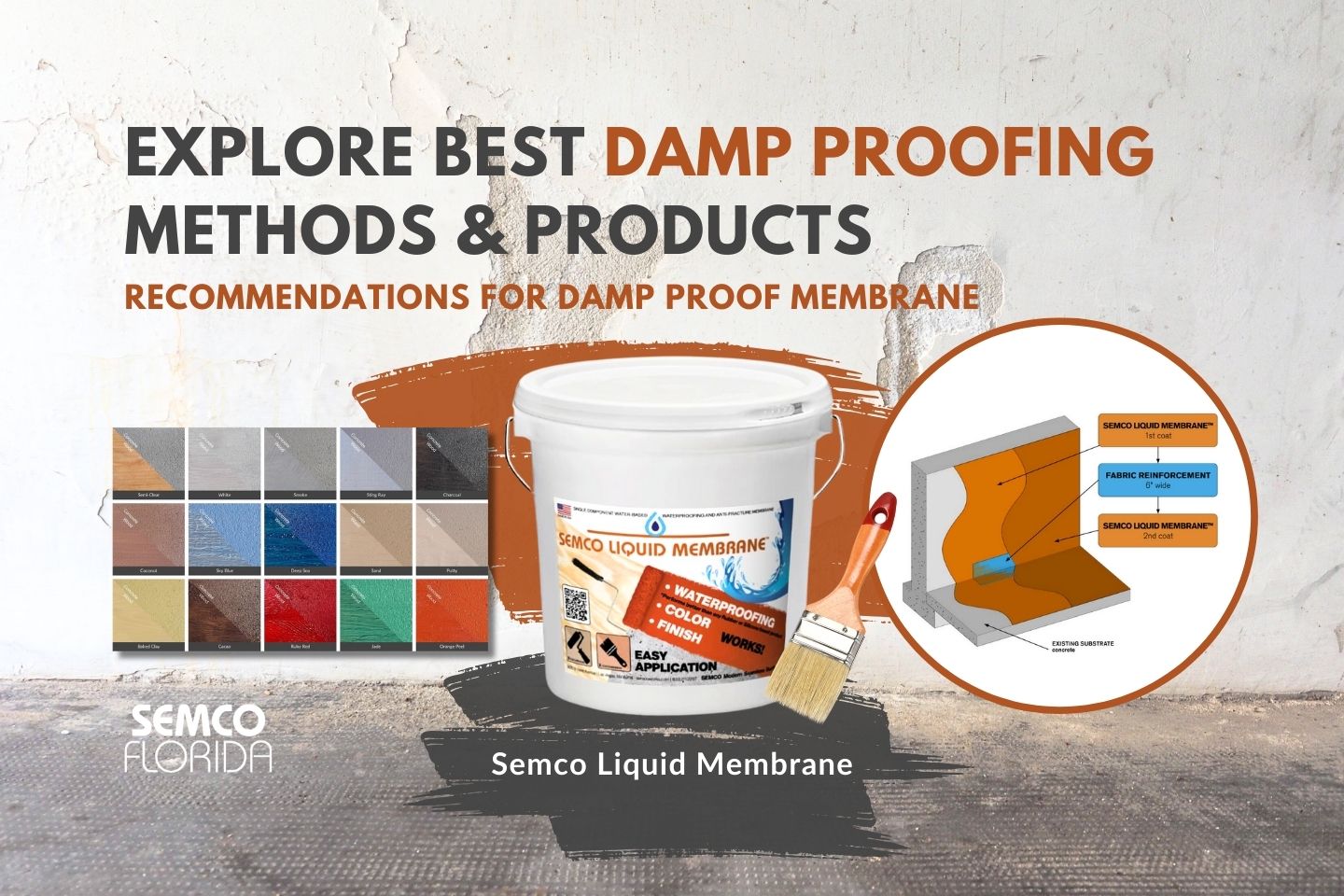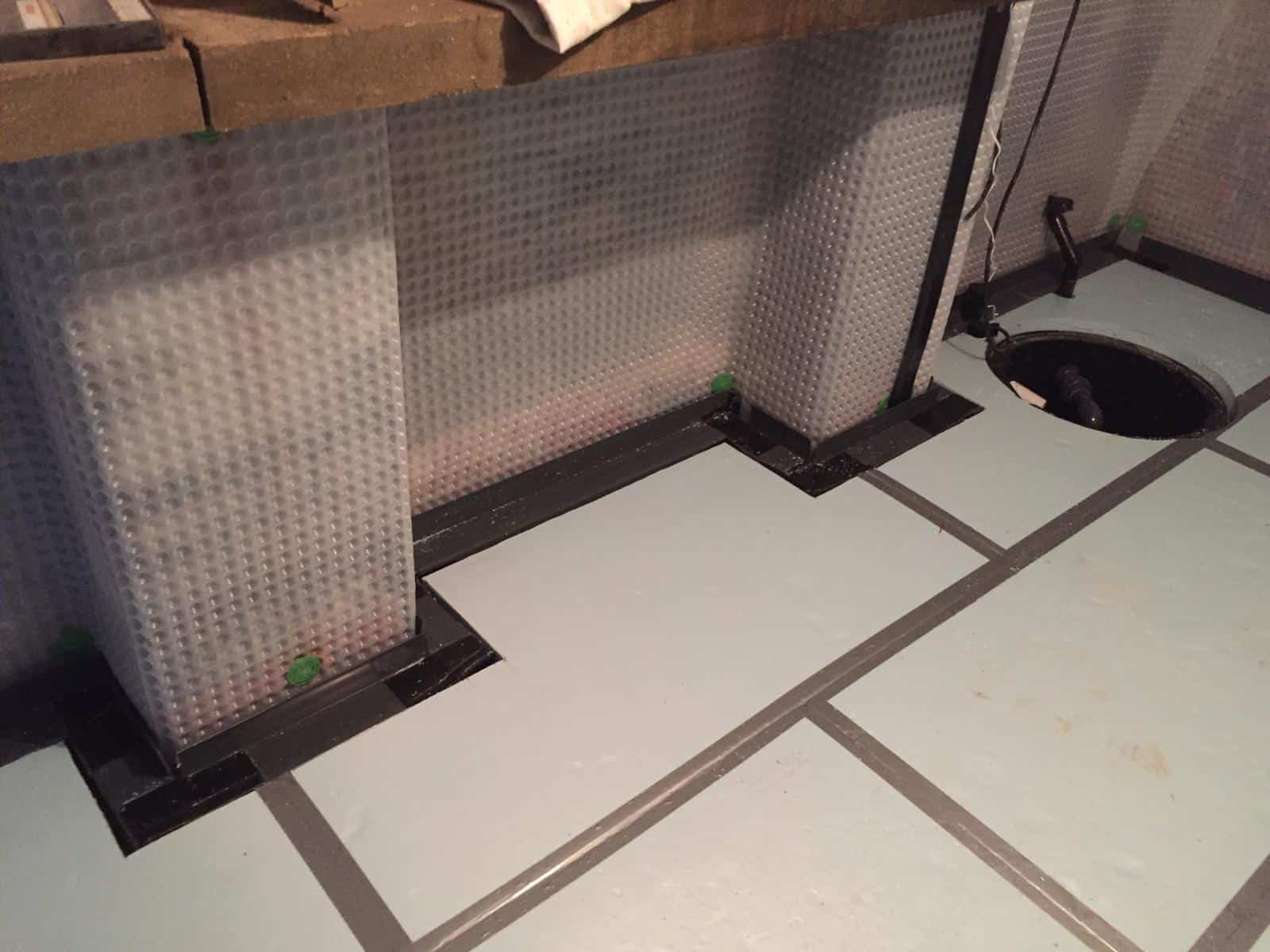Discovering the Numerous Strategies and Solutions for Effective Damp Proofing
Dampness in structures poses significant obstacles to both structural stability and indoor air high quality. Different techniques and services have actually emerged to fight this prevalent concern. From conventional damp-proof membrane layers to ingenious chemical therapies, each approach offers special benefits. Understanding these options is essential for effective moisture control. Selecting the appropriate service depends on certain building problems and needs, triggering more expedition into the most efficient damp proofing methods readily available.
Understanding the Causes of Moisture
Wetness can develop from different resources, recognizing these reasons is crucial for effective remediation. Frequently, wetness stems from 3 key sources: climbing damp, passing through wet, and condensation. Rising moist happens when groundwater travels upwards via permeable materials, such as block or stone, usually because of an absence of an effective barrier (damp specialist newcastle). Permeating damp is generally triggered by exterior factors, consisting of roofing system leakages, damaged rain gutters, or harmed wall surfaces, allowing water to infiltrate a property. Condensation, on the various other hand, results from excess dampness airborne, usually aggravated by bad air flow and temperature differences, leading to water beads basing on surface areas. Identifying these underlying problems is necessary, as each sort of moisture requires a customized method for removal. Proper analysis aids in determining the most efficient services, ultimately safeguarding the structural honesty of a structure and enhancing indoor air high quality
Traditional Damp-Proof Membranes

Chemical Damp-Proofing Solutions
Chemical damp-proofing services supply a cutting-edge technique to avoid moisture intrusion in buildings. These approaches normally entail the application of liquid chemicals that permeate stonework and form a barrier against increasing wet. Commonly made use of chemicals consist of silanes, siloxanes, and various other water-repellent agents that respond with surface materials to create a hydrophobic layer.The application process generally requires drilling openings right into the walls, infusing the chemical solution, and enabling it to heal. This approach is specifically useful for older frameworks where conventional damp-proof membranes might be impractical. Moreover, chemical damp-proofing can be much less turbulent and a lot more cost-effective than extensive renovation projects.While efficient, these solutions depend on correct application and environmental problems for peak efficiency. Routine maintenance and surveillance are vital to guarantee the durability of the damp-proofing treatment. On the whole, chemical damp-proofing stands for a versatile alternative for safeguarding structures against moisture-related damages
Tooth Cavity Wall Building Methods
Dental caries wall construction strategies supply various benefits, specifically in wetness control and energy efficiency. By including an air gap in between 2 layers of stonework, these wall surfaces effectively reduce water ingress while boosting insulation. This combination not just protects structures from wetness yet likewise contributes to decreased power usage.
Advantages of Tooth Cavity Walls
When thinking about efficient wet proofing approaches, the advantages of cavity wall surfaces stand out plainly. Cavity wall surfaces consist of 2 separate layers, producing an air void that properly minimizes wetness penetration. This style decreases the danger of moisture, as the outer wall functions as a barrier versus rain and water ingress. In addition, tooth cavity wall surfaces boost thermal insulation, which adds to power effectiveness by reducing warmth loss. They also give sound insulation, helping to produce a quieter indoor atmosphere. The air space allows for air flow, which assists in wetness control and lowers the chance of mold development. These advantages not just improve the overall comfort of a structure but likewise add to its long life and architectural honesty.
Dampness Control Techniques
Reliable wetness control techniques are essential in cavity wall surface building to assure lasting security against dampness. One key method entails the unification of weep openings, which assist in water drain from the cavity, preventing accumulation. Furthermore, the use of breathable membrane layers can assist handle wetness degrees while allowing entraped vapor to escape. Proper positioning of insulation is likewise essential, as it ought to not block drain courses. Additionally, making sure that the external fallen leaves of the cavity wall are created with waterproof products enhances overall resilience. Regular upkeep checks are vital to identify any kind of blockages or damage early, safeguarding the structure's honesty. Ultimately, a mix of these techniques creates a robust defense versus moisture invasion in tooth cavity walls.
Insulation and Power Performance
Insulation plays an important duty in enhancing energy efficiency within dental caries wall construction. By including insulating products, these walls develop a thermal barrier that reduces warm loss and lowers power consumption. Reliable insulation not only helps maintain a secure indoor temperature yet also mitigates the risk of dampness, as it stops condensation within the wall surface cavity. Different techniques, such as the use of stiff foam boards or mineral wool, can be used to achieve perfect insulation efficiency. In addition, correct installation is necessary to ensure that voids and voids are minimized, which can or else endanger energy effectiveness. Inevitably, a well-insulated tooth cavity wall surface adds considerably to general sustainability and decreases heating & cooling costs for homeowners.
External Damp Proofing Techniques
External moist proofing methods are essential for securing structures from wetness infiltration. Two effective methods consist of the application of water-proof membranes and the setup of French drains pipes. These solutions aid alleviate water accumulation and maintain the stability of structures.
Waterproof Membrane Application
While various approaches exist for protecting against moisture ingress, the application of water resistant membranes stays a highly efficient external wet proofing method. These membrane layers are normally made from products such as polyethylene, rubber, or customized asphalt, giving a robust barrier versus water penetration. The setup procedure involves using the membrane layer to the outside surfaces of walls or foundations, guaranteeing complete coverage to avoid leakages. Correct attachment and securing at joints are critical to making best use of performance. Waterproof membrane layers can be applied in numerous types, including fluid finishes and sheet membrane layers, permitting adaptability based upon the certain requirements of the structure. This method not just safeguards structures from wetness however likewise improves their durability and structural integrity.
French Drainpipe Setup
One reliable method for taking care of groundwater and avoiding dampness buildup around a building's structure is the installment of a French drainpipe. This drainage system is composed of a trench filled with crushed rock and a perforated pipeline that redirects surface area water far from the structure. Appropriate installation needs cautious planning, making certain that the drainpipe inclines away from the framework to promote suitable water circulation. Furthermore, the place of the drainpipe is essential; it must be positioned in locations vulnerable to merging or excess wetness. Regular upkeep, consisting of clearing debris from the gravel and ensuring the pipeline continues to be unblocked, is essential for long-lasting efficiency. Inevitably, a well-installed French drainpipe can greatly reduce the danger of water-related concerns in cellars and foundations.
Inside Waterproofing Strategies
Interior waterproofing approaches are important for safeguarding a structure's inside from dampness infiltration and potential water damage. These techniques generally involve the application of specific materials and methods designed to produce a dampness barrier within the framework. One common technique is making use of waterproof coatings or sealants on walls and floorings, which stop dampness from penetrating surfaces.Additionally, installing interior drainage systems, such as sump pumps, can successfully handle water buildup in basements and crawl rooms. An additional method click here includes the usage of vapor barriers, which are mounted to prevent dampness activity from the ground into living spaces.Moreover, attending to any type of fractures or voids in walls or foundations with ideal sealants assures a thorough protection against water intrusion. By implementing these interior waterproofing techniques, home proprietors can considerably decrease the danger of mold growth, architectural damages, and various other moisture-related concerns. Correct execution of these techniques is vital for long-lasting defense and building integrity.
Routine Upkeep and Examination Practices
Regular maintenance and examination practices are crucial for ensuring the lasting efficiency of wet proofing options in any structure. Regular checks make it possible for homeowner to identify very early indications of moisture invasion, such as peeling off paint, mold growth, and stuffy smells. These indications can signify underlying concerns that call for prompt attention.Inspections need to be conducted a minimum of each year, concentrating on vulnerable locations like basements, creep areas, and exterior walls. Throughout these analyses, homeowner ought to examine sealers, drain systems, and ventilation to validate they operate correctly.Additionally, keeping downspouts and gutters is necessary, as clogged up systems can bring about water buildup near the foundation. Implementing a routine upkeep schedule, together with prompt fixings, can substantially expand the lifespan of wet proofing measures and secure the architectural honesty of the structure. Positive procedures eventually contribute to the general health and wellness and security of the living environment.
Regularly Asked Questions
For How Long Does Damp Proofing Typically Last?
The duration of damp proofing performance differs, generally lasting in between 20 to 50 years. Elements such as application quality, environmental conditions, and upkeep practices substantially affect the long life of the damp proofing treatment.

Can I Damp Evidence My Home Myself?
The individual considered the feasibility of DIY damp proofing. With appropriate research and the right products, it is feasible. They also acknowledged the significance of specialist assistance to assure lasting performance and prevent future problems.
What Are the Signs of Inadequate Damp Proofing?
Signs of ineffective damp proofing consist of persistent moldy smells, noticeable mold and mildew development, peeling off paint, moist spots on walls, and wood degeneration - damp proofing newcastle. Home owners should resolve these concerns immediately to protect against further damage and health problems
Does Damp Proofing Affect Indoor Air Quality?

Just How Much Does Specialist Damp Proofing Expense?
Professional wet proofing costs differ considerably, usually ranging from $1,000 to $5,000 relying on the residential property's dimension, the degree of the moist problem, and selected techniques. Each situation requires a tailored assessment for exact pricing. Typically, dampness originates from three primary sources: rising wet, permeating wet, and condensation. When taking into consideration reliable wet proofing methods, the advantages of cavity wall surfaces stand out prominently. Exterior damp proofing techniques are necessary for shielding frameworks from moisture infiltration. While various techniques exist for protecting against moisture ingress, the application of waterproof membrane layers continues to be an extremely effective exterior damp proofing strategy. Indications of ineffective wet proofing include persistent musty odors, visible mold growth, peeling paint, moist patches on wall surfaces, and timber degeneration.